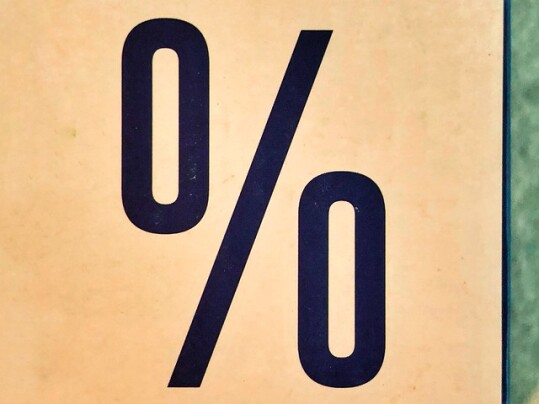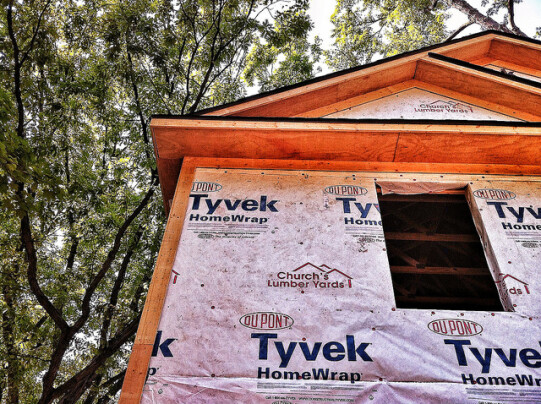New data released by the U.S. Census Bureau and the Department of Housing and Urban Development shows the number of new homes that began construction in February was 10.3 percent lower than the month before. The decline marked the second consecutive month home building slowed. In a housing market starved for additional inventory, this may seem like discouraging news. After all, if home building slows and the number of homes for sale doesn’t pick up, prices will continue to spike, affordability will suffer, and hopeful home buyers will have a harder time finding homes to buy. Fortunately, the numbers may be deceiving. How so? Well, for one, bitter cold and winter storms affected much of the country in February. And more than just typical winter weather in states accustomed to a February freeze, the storms and cold reached into Texas and much of the South. Because this likely caused home builders to pause construction, economists expect the setback will be temporary and new residential construction will rebound in the months ahead. (source)
Archive for March 2021
36% Of Homes Sold Above List Price In February
The price a home is listed for isn’t necessarily the price its buyer will pay. That’s especially true when the number of homes for sale is low, as it is now. In short, when there are fewer homes for sale it makes competition among buyers more likely. And when there’s competition, there are bidding wars. So how common is it these days that a prospective home buyer will have to offer more than the homeowner is asking in an effort to beat offers from other buyers? Well, according to new numbers from one recent analysis, it’s more common than ever before. In fact, in February, 36 percent of the homes sold during the month went for more than their asking price – a record high. That means, if you’re a home buyer looking at listings and calculating what you can afford, you should also calculate how affordable those homes would be if the price were to go up. The good news, though, is that market conditions are expected to change in the coming months. As more homes are listed for sale this spring and summer, the market will be better balanced and the share of homes sold above their list price should come down. (source)
Mortgage Rates Up Slightly In Weekly Survey
According to the Mortgage Bankers Association’s Weekly Applications Survey, average mortgage rates were up slightly last week from the week before, with increases seen for 30-year fixed-rate loans with conforming loan balances, loans backed by the Federal Housing Administration, and 15-year fixed-rate loans. Jumbo loans were flat from one week earlier. But though rates are now at their highest point since last June, demand for home purchase loans continues to rise. Last week, it was up 2 percent week-over-week pushing it 5 percent higher than last year. At the same time, higher rates have hurt refinance demand, which fell 4 percent from the week before. Joel Kan, MBA’s associate vice president of economic and industry forecasting, says there are a few factors helping drive buyer demand. “The purchase market helped offset the slump in refinances,” Kan said. “Activity was up 5 percent from a year ago, as the recovering job market and demographic factors drive demand, despite ongoing supply and affordability constraints.” The MBA’s weekly survey has been conducted since 1990 and covers 75 percent of all retail residential mortgage applications. (source)
Builder Confidence Still High Despite Lumber Prices
When there’s a lack of homes for sale, new home construction plays an important role in balancing the market. Not only does building more new homes help provide buyers with options, it also helps keep price increases from spiking. That’s why the National Association of Home Builders conducts a monthly survey to gauge how confident home builders are in the market for new homes. If builders are optimistic, it’s good news for prospective home buyers, since it likely means more new homes – and a better balanced market – are on the way. The NAHB’s survey is scored on a scale where any number above 50 indicates more builders view conditions as good than poor. In March, the survey fell two points to 82, mostly due to concerns over the cost of lumber. Lumber prices have risen nearly 200 percent over the past year and the added costs have made it more difficult for builders to build homes affordably. However, despite the supply-side issues, high buyer demand has kept confidence near all-time highs. In fact, the index is currently just eight points below its record high of 90, reached last November. (source)
Lenders See Stable Credit, Higher Demand Ahead
Each quarter, Fannie Mae asks senior mortgage executives for their views on the upcoming mortgage market. Their Mortgage Lender Sentiment Survey can be a good predictor of what’s ahead for housing. So what are mortgage execs saying about the coming spring and summer market? Well, for starters, they expect access to credit to remain stable. After tightening last spring, credit standards have eased over the past year and are now at pre-COVID levels. That means, qualified buyers should feel confident in their ability to be approved for a loan. Lenders also expect buyer demand to remain high this year. In fact, the survey found “demand expectations over the next three months rose significantly across all loan types from last last quarter and remained similar to the levels seen in Q1 2020.” In short, lenders are expecting a hot purchase market. However, though optimistic about demand from buyers, lenders aren’t as confident in refinance activity. With mortgage rates expected to increase from all-time lows, they predict there will be fewer homeowners looking to refinance as the year progresses. (source)
Millennials Say They’re Comfortable Buying Online
Traditionally, before you make an offer on a house, you go see it in person. After all, buying a home is a major financial transaction. You wouldn’t want to make that kind of commitment without seeing exactly what you were purchasing. But these days, there are other ways to see a property and home buyers are becoming increasingly comfortable with them. In fact, digital and online tools have become more widely accepted among buyers since the coronavirus pandemic began – especially, younger ones. For example, according to a newly released survey, 59 percent of millennial buyers now say they would be, at least, somewhat confident making an offer on a home they only toured virtually. Additionally, 39 percent said they’d be comfortable buying a home entirely online. That’s a significant percentage of buyers. But while substantial, it still leaves a majority of home buyers who wouldn’t be comfortable making an offer sight unseen. Which means, most buyers probably prefer a mix of virtual and traditional access to the homes they’re interested in seeing. It also means digital tools, like 3D-virtual tours, digital-floor plans, and self-tour technology, are likely here to stay. (source)
A Look At The Market One Year Into COVID
The housing market has done pretty well in the year since the coronavirus’ onset. Following an initial slowdown, home buyers bounced back in the months after the pandemic began. Then, the market benefited from record low mortgage rates and remote work – which helped fuel Americans’ interest in making a move. As a result, buyer demand surged and stayed high through the end of 2020 and into 2021. But while most measures of the market show it now surpassing pre-pandemic levels, new listings are one that continues to lag. In fact, according to a new report from the National Association of Realtors’ consumer website, new listings were nearly 30 percent lower than last year at the beginning of March. And when the number of available homes falls that far behind the number of interested buyers, price increases accelerate. Fortunately, Danielle Hale, the website’s chief economist, says the gap between supply and demand should ease in the months ahead. “The housing market’s lopsided momentum could ease in the coming months,” Hale said. “We expect the vaccine’s rollout to alleviate some sellers’ anxieties, which could help the supply crunch.” As that happens, and the market becomes more balanced, prices and competition should begin to wane. (source)







